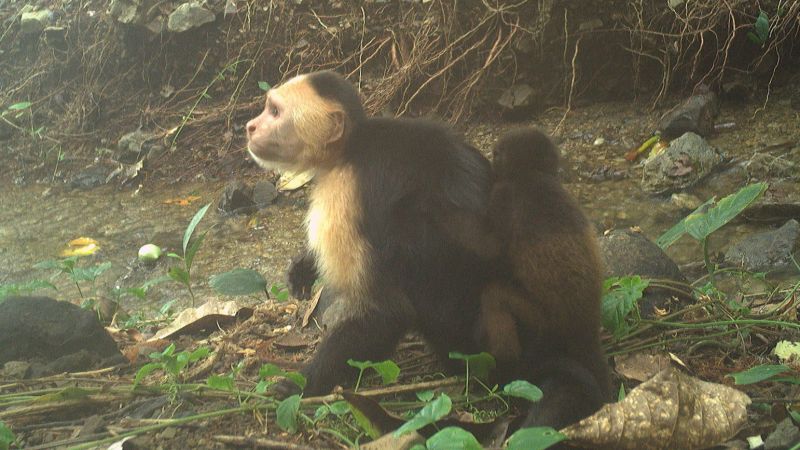Unexpected Discovery in Capuchin Behavior
Sign up for CNN’s Wonder Theory science newsletter. Explore the universe with news on fascinating discoveries, scientific advancements and more.
CNN —
Initially, behavioral ecologist Zoë Goldsborough assumed a tiny figure spotted on video of a capuchin monkey was just a young capuchin. However, something felt unusual. Upon further inspection, she noticed a distinct coloration and promptly shared a screenshot with her research team, who were equally baffled.
“I recognized it was something we hadn’t encountered before,” Goldsborough reflected. Further analysis revealed that the small figure was, in fact, a baby howler monkey belonging to a different species.
As she reviewed additional footage, Goldsborough observed the same adult capuchin, nicknamed “Joker” due to a scar on his mouth, carrying baby howler monkeys across multiple clips. Other male capuchins, identified as Cebus capucinus imitator, were seen engaging in this behavior too. But what could be the reason?
Goldsborough and her team, including researchers from the Max Planck Institute of Animal Behavior and the Smithsonian Tropical Research Institute, analyzed 15 months of footage from Jicarón Island, part of Coiba National Park, to investigate this peculiar behavior. Their findings indicated that at least 11 infant howler monkeys had been abducted by four male capuchins between January 2022 and March 2023. Notably, there was no evidence of the capuchins nurturing or playing with the infants, leading the researchers to suggest this behavior might be a “cultural trend” triggered by the island’s specific ecological conditions.
Continuing Mysteries and Conservation Implications
Much remains unclear about this phenomenon. The howler monkeys on Jicarón belong to an endangered subspecies, Alouatta palliata coibensis, which gives birth infrequently, averaging once every two years. Understanding these capuchin behaviors could have significant conservation implications, as the survival of this subspecies is at stake.
The research team utilized hidden camera traps to monitor the capuchins, as direct observation is challenging due to Jicarón’s rugged terrain and lack of human habitation. However, this method presents limitations, as crucial actions taking place in the treetops, where howler monkeys reside, are not captured. Thus, precise details regarding the timing and motivations behind the abductions remain elusive.
An Uncommon Primate Behavior
Initially, researchers pondered if the sightings indicated a rare case of adoption, noting that primates sometimes adopt abandoned infants. However, observations revealed that Joker was not nurturing the howlers but merely transporting them, with the infant monkeys later dying from starvation. This behavior is atypical for male primates; according to Pedro Dias, a primatologist, adoption is more commonly seen in females.
Behavioral ecologist Corinna Most initially speculated the abductions might be predatory in nature. Still, as she examined the data, it became clear the capuchins did not engage in eating the babies. Instead, they carried them with minimal interaction, raising further questions regarding the motivation behind such actions. Researchers hypothesized boredom might be a considerable factor, especially given the capuchins’ unique and low-risk environment on the island.
Conjectures on Animal Behavior and Culture
Research indicates that a lack of threats may allow these capuchins to engage in more arbitrary behaviors as a form of exploration. Furthermore, aspects of boredom could potentially drive creative behaviors, especially among younger capuchins, as highlighted by Goldsborough’s ongoing research into these monkey populations. Cultural innovations are often linked to younger individuals, as seen in other primate studies.
In conclusion, this peculiar capuchin behavior might serve as a reflection on human interactions with other species, highlighting how seemingly purposeless behaviors can have significant effects on their ecosystems. Researchers hope the phenomenon will diminish over time, allowing howler monkeys to adjust their parenting strategies for enhanced protection against the capuchins.



